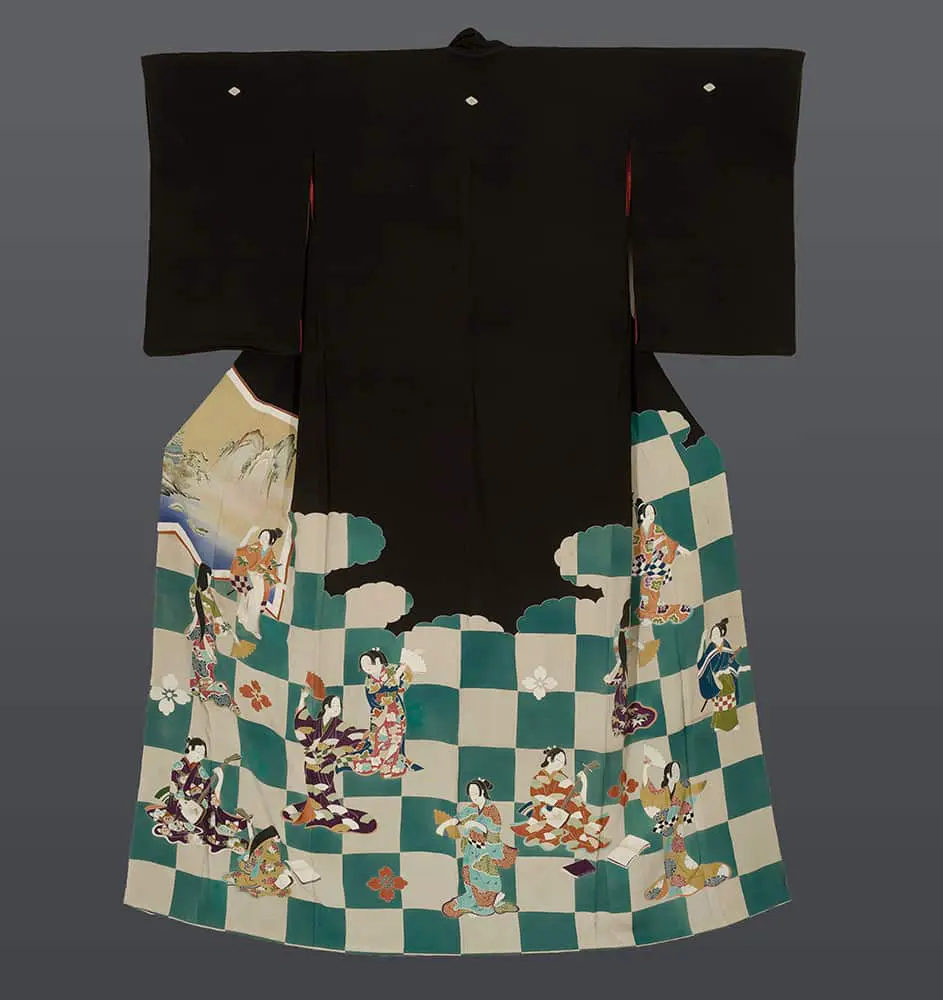Heading
This extraordinary late Meiji period formal dancing kimono represents a sophisticated example of meta-theatrical textile art, where the garment itself becomes a stage for depicting the very performance culture it was designed to serve. The yuzen-painted scenes of geishas dancing and playing music create a remarkable recursive visual narrative—a kimono worn by performers that celebrates the art of performance itself, transforming the wearer into both participant and patron of the entertainment world. The checkerboard motif that serves as the compositional framework carries deep cultural resonance from the Edo period kabuki theater, where such bold geometric patterns became associated with the flamboyant aesthetic of actors who used striking visual elements to command attention and express their artistic personas.
The sophisticated interplay between the geometric regularity of the checkerboard grid and the fluid, organic movement of the figured scenes demonstrates the mature artistic confidence of the Meiji period's textile artists, who had mastered the ability to balance structural order with dynamic narrative content. Each square functions as a miniature stage set, complete with stylized clouds and architectural elements that echo the painted backdrops of kabuki theater, while the figures themselves display the characteristic grace and elegance of professional entertainers captured in moments of artistic expression. The five mon (family crests) indicate this was formal wear of the highest status, likely belonging to a prominent geisha or okiya house, making it not just a beautiful garment but a significant cultural artifact that documents the intersection of high craft, theatrical tradition, and the sophisticated visual culture of Japan's urban entertainment districts during a pivotal moment.
It measures 52 inches (132 cm) from sleeve-end to sleeve-end and stands at 71 inches (180 cm) tall.
This artwork is featured on page 73 of Art Kimono: Aesthetic Revelations of Japan, 1905-1960. This book, published by Yorke Antique Textiles, can be previewed or purchased on our website here.
.avif)


























